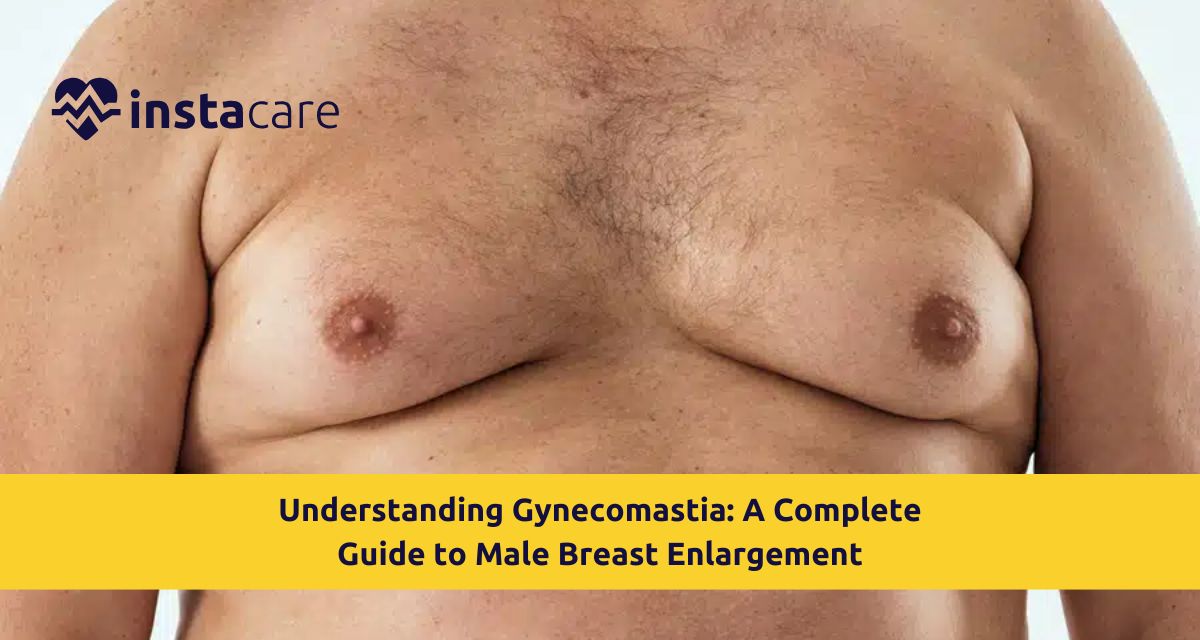The clinical manifestation of gynecomastia causes harmless breast enlargement in male patients. Gynecomastia exists as a harmless condition that produces physical along psychological effects on males despite being noncancerous. The condition of chest fat does not represent gynecomastia because it develops from hormonal imbalances and manifests in this area without the growth of glandular tissue. Most boys, along with men, need precise information about gynecomastia to restore their confidence and recover from the condition.
What is Gynecomastia?
Unstable hormone levels between estrogen and
testosterone result in the condition known as Gynecomastia, where men develop too much breast gland tissue. Gynecomastia is the only cause of male breast enlargement, while obesity-related chest fat pads do not produce this condition. The tissue in gynecomastia stands firm and rubbery because it is located near the nipple area.
This is a condition that can be present in one breast or both breasts and is typically asymmetrical. It can occur in infancy, adolescence, or adulthood, more specifically in older men when there is the usual drop in testosterone levels. Hormonal imbalance and gynecomastia are hand-in-glove, and as such, hormone testing is included in the diagnosis.
Causes of Gynecomastia
The causes of gynecomastia are multifactorial and most commonly involve derangements of the body's endocrine balance. The reason is an excess of estrogen or testosterone deficiency in the majority. The most widely encountered Causes of gynecomastia are:
- Hormonal PUBERTAL alterations
- Aging and the unavoidable decline of testosterone
- Chronic illness, like liver or renal illness
- Congenital defects
- Malignant testicular or adrenal neoplasms
- Intake of some prescribed or illicit drugs
Some of the following drugs cause Gynecomastia:
- Anti-androgens (prostate or growth for cancer)
- Anabolic steroids and androgens
- Anti-anxiety drug
- Tricyclic antidepressants
- Cardiac drugs such as calcium channel blockers
- Anti-ulcer drugs such as cimetidine
- Alcohol, marijuana, heroin, and amphetamines also cause male breast enlargement.
Symptoms of Gynecomastia
Symptoms of gynecomastia and the warning signs of this condition can help identify proper treatment. Symptoms develop gradually and can be:
- Swelling of breast tissue that is enlarged (firm, rubbery to touch)
- Pain or tenderness in the nipple area
- Sensitivity of the nipple to touch or temperature
- Visible swelling of the breasts
- Emotional distress or embarrassment
Gynecomastia can be distinguished from chest fat. Gynecomastia is caused by the formation of glandular tissue, whereas chest fat is diffuse and soft because of obesity. Based on medical examination alone, gynecomastia can be distinguished.
Diagnosis of Gynecomastia
A clear diagnosis of gynecomastia must be made in order to treat it. While making a diagnosis, your doctor may:
- Perform a physical exam of the breast
- Complete medical history and medication history
- Perform blood workup to determine hormone levels
- Perform imaging (mammogram or ultrasound) to exclude a breast tumor
- Perform a testicular ultrasound when the tumor is suspected
- Biopsy can, in unusual situations, be performed to exclude breast cancer, but not normally in males.
Psychological Effect of Gynecomastia
Psychological effects of gynecomastia are usually very severe, particularly in adolescents and young men. It can result in:
- Low self-worth and bad body image
- Depression and anxiety
- Avoidance of taking part in sport or swimming
- Inability to develop interpersonal relationships
All these states of mind tend to isolate the individual. Counseling or psychotherapy might be warranted as auxiliary therapy with physical therapy.
Treatment of Gynecomastia
There are several gynecomastia treatment options available, depending on the cause and severity of the condition. Not all minor cases require treatment and will improve on their own. The most common treatment methods are as follows:
- Observation: particularly in Gynecomastia in teenagers, or for mild gynecomastia
- Treatment with medication: Hormonal therapy (e.g., tamoxifen, raloxifene) for chronic or painful gynecomastia
- Life change: Drug or Medications that cause gynecomastia use and weight gain that cause the condition
- Surgical repair: Chronic or severe gynecomastia
Gynecomastia Surgery
Surgery for gynecomastia, as a last option, corrects it permanently. Two varieties:
- Liposuction: Removes excess fatty tissue
- Mastectomy: Removes glandular tissue with small cuts
Recovery is typically quick with minimal scarring and excellent patient satisfaction. Suitable for individuals whose condition has a significant impact on their quality of life.
Exercises to Reduce Gynecomastia
While Exercises to reduce gynecomastia may not be strong enough to remove glandular tissue, it is also taken into account when addressing surplus fat. Exercise to minimise gynecomastia not only tightens the chest muscles but also tones the rest of the body. Exercises of Choice:
- Push-ups: Tightens chest muscles
- Incline bench press: Engages the upper chest
- Cable crossovers: Define chest
- Cardio exercises: Shatters fat in the rest of the body
These exercises, when combined with a healthy diet, have been found to reduce male breast enlargement in men who have pseudogynecomastia (fat-based breast enlargement in men).
Gynecomastia Recovery and Aftercare
Even if one seeks medicine or surgery on their preference, good Gynecomastia recovery and aftercare are necessary if the impact is to last long enough:
- Post-Operative Care: Compression bandages, swelling management, don't lift heavy objects
- Hygiene: Make the wound regions clean and dry to prevent infection
- Lifestyle: Steer clear of drugs or chemicals that cause the condition
- Monitoring: Schedule a visit to the physician intermittently
Resuming the previous state would fall within the line of 4–6 weeks of post-operative recovery time, but the effect would be unequivocal in 2–3 months.
What to Understand About Teenage Gynecomastia?
Adolescent gynecomastia is extremely common and spontaneous. During puberty, with the change in hormones, breast swelling or enlargement is seen in some boys. It is reversible and resolves within 6 months to 2 years.
But in case of tender breast tissue, or after puberty, or withdrawal from social activities, medical intervention is advised.
Conclusion
The acquisition of knowledge about gynecomastia helps men gain confidence regarding their health and general well-being. The treatment of gynecomastia remains feasible, regardless of its origin from medicinal effects, endocrine disorders, or other systemic diseases. The combined use of early diagnosis with appropriate treatment guidelines and motivational counselling will erase both the physical and psychological impact of the disease. A person with male breast enlargement or someone close to them should research medical data and speak about their options with a healthcare professional.
Please book an appointment with the
best Endocrinologist in Lahore, Karachi, Islamabad, and all major cities of Pakistan through
InstaCare, or call our helpline at 03171777509 to find a verified doctor for your disease.

